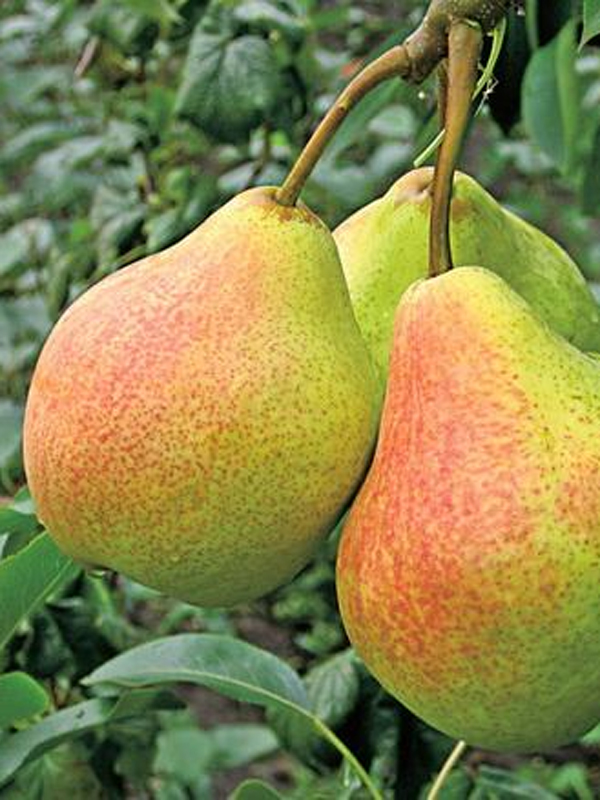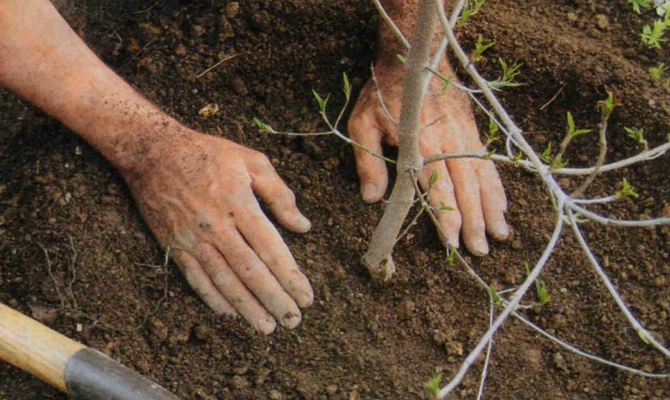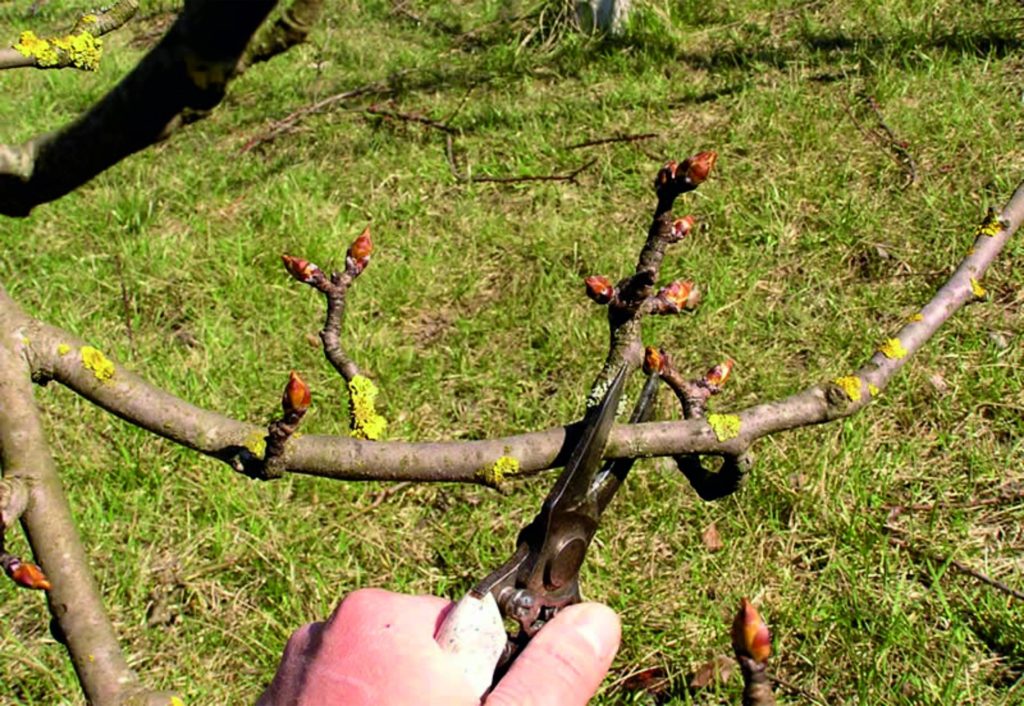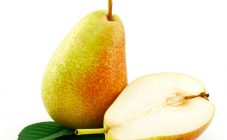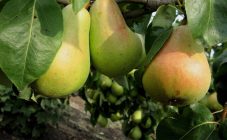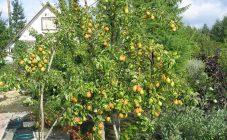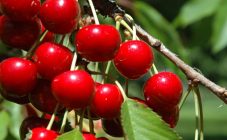Content:
Unlike apples, pears were not very popular in Russia. Everything was associated with the low frost resistance of the varieties of this culture. Thanks to the painstaking work of breeders, this problem has been solved. Now, the Gera pear variety is actively cultivated in the central zone of Russia.
The history of the creation of the variety
The well-known variety was obtained at the All-Russian Scientific Research Institute of Hydraulic Engineering. S.P. Yakovlev, A.P. Gribanovsky, N.I. Saveliev, M. Yu. Akimov.
The result of the study was the pear of the Gera group, bred in 2003. From the Daughter of Zarya variety, she inherited high yields, unpretentiousness and sweet taste, with a sweet aroma, and from Reale Turinsky - resistance to soil damage, medium winter hardiness, late ripening.
Characteristics and description of the Hera pear
| Description of the Hera variety by assessment parameters | |
|---|---|
| Tree options | · Average height - 3.8 m. · The tree is medium-sized, the crown is narrow-pyramidal, rounded, of medium size. · Brown, thin stems, on young shoots there are many lentils. The buds are pressed against the trunk, the shoots are straight. · Curved leaves of a medium-sized variety (about 6-7 cm - in length, in width - 4 cm), broadly oval in shape with a pointed tip, finely serrated edge. The fabric is glossy, the color is dark green. · Crohn's rare, rounded shape. · Shoots of a raspberry-reddish hue, directed towards the sun. · The shoots have internodes of medium length - 30-35 cm. |
| Bloom | · Hera pear blossoms with white flowers with 5 petals in late spring. The flowering covers the trunk of the tree almost completely. · The flower reaches 3 cm in diameter. The petals are closed, with a wavy edge. Pedicel length - up to 2 cm. · Generative buds are located on the growth shoots and bouquet branches. Each bud forms no more than 1 or 2 flowers. |
| Fruiting | · The tree begins to bear fruit at 4-5 years of its life. · The Gera variety is considered late - the fruits reach perfect ripeness in mid-September. |
| Yield | 1. High. One medium tree gives up to 40 kg. 2. Fruits are broadly pear-shaped, smooth. 3. The peduncle grows from a small funnel, its end is directed to the side. Fetal parameters: 1. Weight - from 180 gr. up to 250 gr. 2. The skin is rough, dry, of medium thickness. Has small white blotches. 3. Juicy, loose flesh with a slight aroma, white or more often beige, granular. Sweet taste with slight sourness. The structure is buttery. Granular cells are rare. 4. Cream color green with a transition to yellow during maturation. There is a light, pink blush. 5. The core is round, the seeds are brown, tapering upwards. Stay in a closed chamber. 6. The palatability was rated at 4.3 on a 5-point scale. · The factors that negatively affect the quantity and quality of fruits include rocky soil, insufficient sunlight, moisture. |
| Frost resistance | High. The variety can withstand frosts down to -34 degrees Celsius. |
| Self-fertility | Low. For pollination on the site, you need to have other varieties of pears. |
| Disease resistance | · Good resistance to scab, septoria, antomosporiosis.The pear is susceptible to rust and powdery mildew. · Rarely, a tree suffers from bacterial burns, moniliosis, milky shine. |
| Pest resistance | · No particular resistance to parasites was observed in the Hera pear. · Among pests there are often moth, pear mite, green aphid. |
| Drought tolerance | Average. With a prolonged absence of watering, pears do not reach their maximum size, they become drier and sour in taste. |
| Preservation | · If the conditions are met, the fruits of the Hera pear are stored for 150-160 days. · Under normal conditions at room temperature - about 80 days. |
| Transportability | The fruits tolerate transportation very well. |
Features of planting and care
If the summer resident chose the pear Gera, then he should take into account important features in the choice of soil, seedling, care tactics for a fruitful harvest and the ideal state of the tree.
Sapling selection
For propagation, it uses additives from a healthy tree. The variety set of seeds is used only by agronomists.
The Gera pear in temperate regions is planted in the fall, before the onset of frost. It has been proven that spring planting in 80% of cases does not bring a positive result.
Site selection
In terms of soil and plot, the variety is very demanding. The soil needs fertile, lumpy, with a weak acidity, which maintains moisture well. A soil type such as black soil or loam is ideal for these parameters. Sandy soil will not hold moisture.
The land does not need to be fertilized often. You can improve the quality of the soil by loosening, abundant watering.
The height of the tree should be taken into account. The distance from the fence, buildings, houses should be more than 3 m.
Experienced gardeners choose a well-lit side so that it warms up well, but does not burn the tree.
Planting a seedling
At least a week, they dig a hole 1 m deep, at least 80 cm in diameter. Add to the landing site:
- 5 liters of water.
- humus.
- 2-3 buckets of peat.
- 3 tbsp. tablespoons of potassium sulfate.
- coarse sand.
After planting, the trunk circle is watered abundantly.
Seedling care
During the first month, the sprout should be watered abundantly - 2 times a week. When the Hera pear grows stronger, it is rarely watered: 2 times - in the summer-autumn period (before and after flowering), once - in the fall.
The crown is formed by the tree itself. Only sanitary pruning is required from the owner: removal of old leaves, branches.
Pollination
The Gera pear variety has a very low self-fertility. He definitely needs a pollinator in the form of other varieties.
The following pear varieties are best suited for this purpose:
- Lada.
- Chizhovskaya.
- In memory of Yakovlev.
Fertilizer
Pruning
The Hera pear does not need to be cut as much as other varieties. Enough 1 sanitary pruning in the fall, before the onset of cold weather, as well as cleaning in early spring, which is carried out according to the scheme:
- Heavily thickened leaves are thinned out so that the tree gets full access to sunlight.
- One quarter of the growth of the plant is cut off so that it does not stretch strongly upward.
- Cut off places are smeared with a processing agent.
- All dry, growing at right angles, damaged branches are removed, foliage is removed.
- Cuts are made at the base of the branches.
Diseases and pests
Experienced gardeners use Horus to treat diseases and get rid of parasites. Apply once, according to the instructions. Then apply "Tilt". Fix the result "Fast". The drugs are sold in pharmacies or specialized stores.
After applying fungicides, use the following recommendations:
- Fallen leaves are removed, as affected areas and parasites accumulate on them.
- Process the tree trunk with lime for the winter.
- The trunk circle is watered with urea, the soil is dug up.
- The tree is inspected throughout its growth.
Harvesting and storage
In order for Gera pears to be stored for a maximum period (150-160 days), you must follow the rules:
- The fruits are placed in boxes with lined paper, straw or sand, sawdust.
- Pears are stacked in layers so that there are free gaps, the harvest does not touch.
- The storage temperature is maintained no higher than 0 degrees Celsius. After 10 days, they begin to decrease to -2 degrees Celsius.
- Humidity is around 85%.
Pros and cons of the variety
Advantages and disadvantages
| Positive and negative sides of the Hera pear | |
|---|---|
| pros | Minuses |
| High quality fruit | High risk of damage by pests, diseases in the absence of proper care |
| Good storage performance of fruits, subject to the rules | Average drought tolerance |
| Large-fruited | Late-ripening variety |
| Frost resistance | Darkening of fruits and deterioration of presentation due to improper storage |
| High yield | Demanding soil |
| Good transport performance | Low self-pollination The need for sunlight |
Pear Gera is a godsend for gardeners and summer residents of Russia. By finding an approach to this variety, the owner will receive a bountiful tasty harvest every year at minimal cost.
